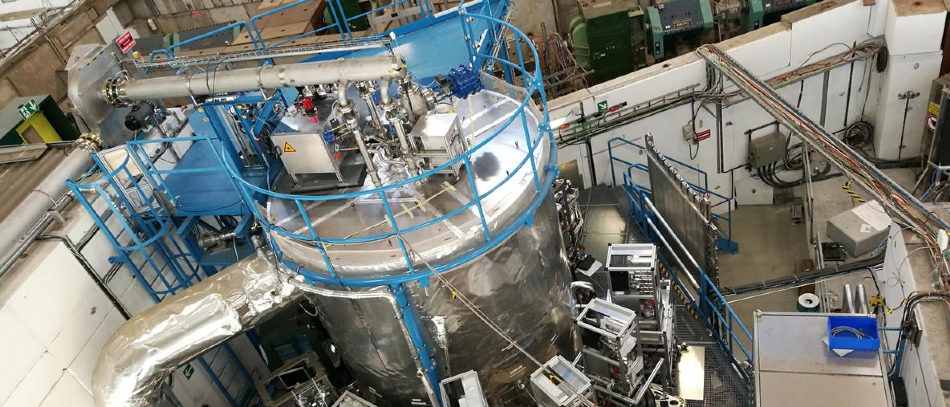Apr 20 2020
What impact does the development of fine particles and the global warming exert on each other? The complete atmosphere cannot be heated for experimental purposes, so a portion of it is placed in a chamber and examined there.
 With a 3-m diameter, the CLOUD chamber at CERN is one of the largest experimental chambers in use globally. Image Credit: H. Manninen.
With a 3-m diameter, the CLOUD chamber at CERN is one of the largest experimental chambers in use globally. Image Credit: H. Manninen.
Currently, an established process has been used for analyzing fine particles in experimental chambers.
To gain improved insights into the mechanisms related to the formation of fine particles, atmospheric events can be investigated experimentally in comparatively huge containers called experimental chambers. In such chambers, atmospheric conditions like pressure, humidity, temperature, particles, and gases are modified in a controlled way.
At present, the experimental chamber conditions and the techniques employed have been streamlined as part of a research project led by the Institute for Atmospheric and Earth System Research (INAR) of the University of Helsinki.
Going forward, research teams that carry out chamber measurements will stick to the protocol established in the study reported in the renowned journal Nature Protocols.
Global Warming also Affected by Fine Particles
What is the consequence faced when the temperature of the Earth increases? What is the effect on clouds, their reflectance, and the development of fine particles?
Fine particles in the atmosphere have a marked effect on global warming. For instance, clouds cannot form in the absence of particles: clouds require a seed from which they are formed—a core around which humidity begins to condense. Moreover, the reflectance and color of clouds rely on the fine particles within them.
Existing equipment can be employed to track the development of fine particles from atmospheric gases, right from the initial phase, at the level of nanometer-sized molecular clusters.
How do the particles develop and disappear? In the formation of particles, of specific interest is to know how quick is the development and growth of molecular clusters, and how many particles are present in the end.
The standard proposed as part of the study identifies how chamber measurements should be performed and how the speed at which the particles form and grow is estimated, as well as the margins of error. By using the standard technique, measurements of the various chambers can be compared easily.
Simulating the Past and Future
The atmospheric particles are partially formed from nature and partly from human activity. Currently, almost 10% to 50% of the particles and gases, or aerosols, in the air are generated by human activity.
The chamber measurements can mimic not just future conditions but also those that existed thousands of years or centuries ago on Earth. For instance, they can be employed to mimic the state of the clouds and air in the pre-industrial period or before the human era.
A better understanding can be gained about the extensive global phenomena, like climate change, affecting the lives of all living beings by analyzing the formation and impact of nanoparticles.